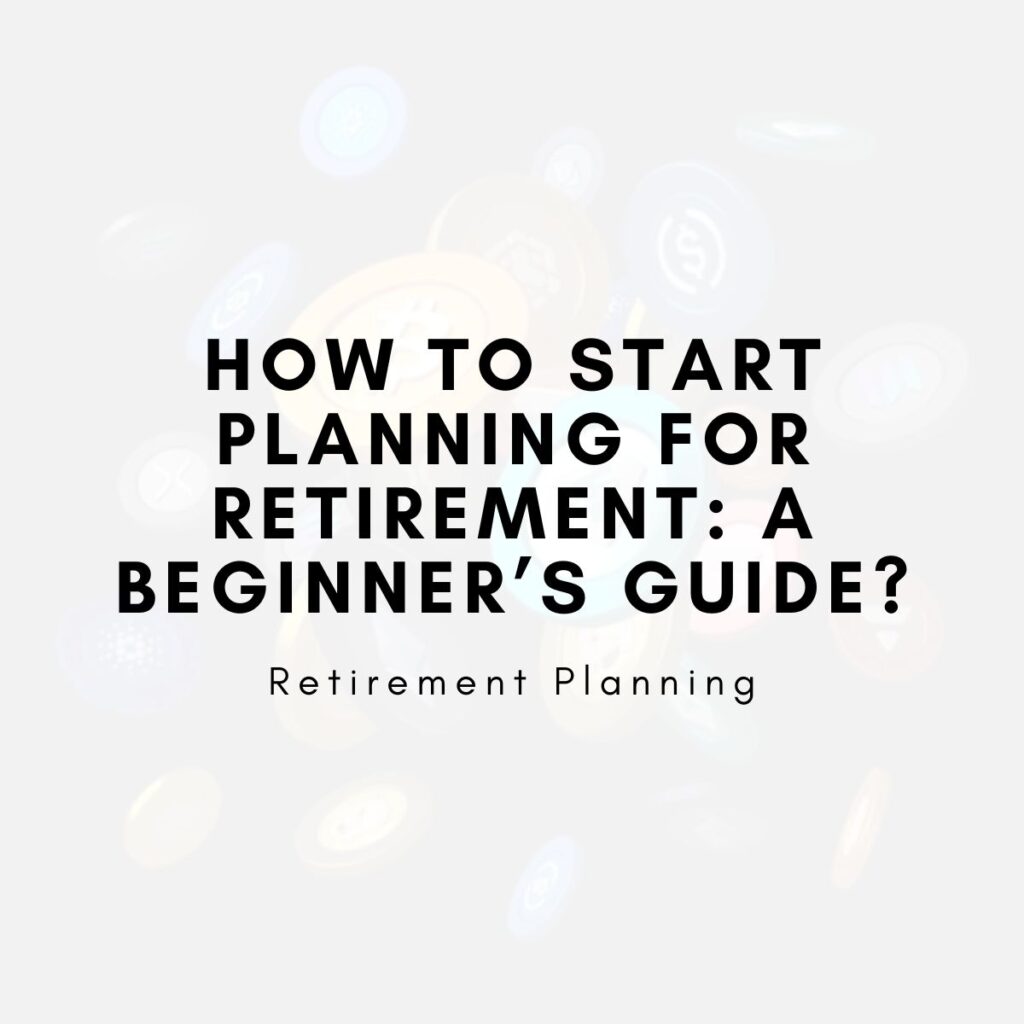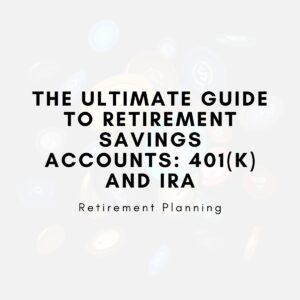
How can beginners effectively start planning for retirement?
To plan for retirement effectively, start by evaluating your financial goals and estimating future expenses based on your desired lifestyle. Open a retirement account like a 401(k) or IRA and contribute regularly, especially if your employer offers matching contributions. Build a budget that prioritizes saving, automate contributions, and invest wisely to leverage compound growth. Real-life examples show that small, consistent efforts today lead to significant long-term rewards.
Table: Beginner’s Guide to Retirement Planning – Key Steps and Real-Life Examples
| Section | Summary | Key Tips | Examples |
|---|---|---|---|
| Understanding the Importance | Explains why starting early is essential. Delaying retirement planning can result in needing to save more aggressively later or working longer than planned. | Start as early as possible to take advantage of compound interest. Even small contributions can grow significantly over time. | Emily started saving at 25 and accumulated $720,000 by 65, while Jake, who started at 40, saved only $180,000. The earlier you start, the better. |
| Setting Retirement Goals | Encourages defining clear retirement goals and estimating future income needs based on lifestyle preferences. | Use retirement calculators to estimate future expenses. Define your desired retirement lifestyle to determine how much income you’ll need. | John wants to retire in a small town with modest expenses. He estimates $40,000 annually, using a retirement calculator to adjust his savings plan. |
| Creating a Savings Plan | Discusses retirement accounts like 401(k)s, IRAs, and HSAs, highlighting employer matching and tax benefits. | Maximize employer matches in your 401(k), open an IRA for more flexibility, and consider an HSA for healthcare savings. | Lisa contributes 6% of her salary to her 401(k) and receives a 3% match. She also opened an IRA to boost savings further. |
| Budgeting and Reducing Expenses | Stresses tracking spending and creating a budget to free up more money for retirement savings. | Track your spending for a few months to identify areas to cut. Reduce discretionary spending like dining out and redirect those savings into retirement accounts. | Mark cut back on dining out and saved $200/month, redirecting it to his IRA, increasing his savings by $2,400/year. |
| Investing Wisely | Emphasizes the importance of diversifying investments and aligning risk levels with your age and financial goals. | Diversify across stocks, bonds, and real estate. Adjust your asset allocation as you age, shifting toward safer investments as retirement nears. | Sarah, in her 30s, has 80% of her portfolio in stocks and 20% in bonds. As she nears 60, she plans to shift to more conservative investments. |
| Protecting Savings | Highlights the importance of safeguarding retirement funds through insurance, avoiding early withdrawals, and maintaining an emergency fund. | Maintain an emergency fund to avoid dipping into retirement savings for unexpected expenses. Secure adequate insurance coverage for health, home, and life. | Tom built a $20,000 emergency fund, preventing early withdrawals from his 401(k) during a medical emergency. |
| Monitoring and Adjusting | Stresses the importance of reviewing your plan regularly and adjusting it for life changes like marriage, having children, or changes in income. | Regularly review your retirement plan, especially after major life changes. Reallocate assets or adjust your savings rate as your situation evolves. | After getting married, Sarah increased her retirement contributions to prepare for future family expenses. |
| Preparing for Transition | Discusses planning for the transition into retirement, including estimating healthcare costs and staying active in retirement. | Start planning the logistics of retirement at least five years in advance. Consider healthcare plans like Medicare and continue to pursue hobbies and interests in retirement. | Jack delayed his retirement by two years to increase savings. He also enrolled in Medicare and a supplemental plan to cover healthcare costs. |
This table provides a structured overview of the key steps in retirement planning, with summaries, actionable tips, and real-life examples. Each section is designed to offer beginners practical guidance for setting goals, saving, investing, and preparing for a successful retirement. The examples show how real people implement these strategies to build a secure financial future. By following these steps, you can take control of your retirement planning, no matter where you are in life.
Introduction
Imagine retiring at 65, with enough savings to enjoy your golden years stress-free. Whether you want to travel the world, spend more time with family, or finally take up that long-postponed hobby, having a solid retirement plan is key. Unfortunately, many people procrastinate, thinking they’ll “get to it later.” But time is one of the most powerful allies in retirement planning. The earlier you start, the more you can take advantage of compound interest, investment growth, and tax-efficient savings strategies. If you feel like you’ve waited too long, don’t worry—you can still make meaningful progress toward financial security. This guide will provide actionable steps and examples to help beginners lay the foundation for a worry-free retirement.
Understanding the Importance of Retirement Planning
Why Start Early?
One of the biggest advantages of starting early is the power of compound interest, which allows your earnings to generate additional returns over time. Let’s say you’re 25 years old and start saving $300 a month in a retirement account with an average annual return of 7%. By the time you’re 65, you’ll have accumulated nearly $720,000, thanks to compounding. Now, compare that to someone who starts saving the same amount at 40. They’ll only have about $180,000 by age 65. This stark difference shows how valuable time is in building wealth.
Starting early also provides more flexibility. If you face unexpected financial challenges—like medical emergencies or job loss—you’ll have a cushion to fall back on. Plus, you can afford to take more investment risks early in your career, which can yield higher returns in the long run.
The Cost of Waiting
Consider a real-life example of two friends, Emily and Jake. Emily started saving for retirement in her 20s, while Jake didn’t begin until he was 40. Both invested in similar portfolios, but Emily ended up retiring comfortably at 65, while Jake found himself working part-time well into his 70s to make ends meet. The difference? Emily gave her money more time to grow, while Jake’s late start meant he had to save a much higher percentage of his income, which was difficult as his expenses grew over time.
Delaying retirement planning often means you’ll need to work longer or reduce your lifestyle expectations later in life. It’s a risk you can avoid by starting today, even if you can only contribute a small amount.
Setting Clear Retirement Goals
Define Your Retirement Vision
Your retirement goals will largely dictate how much you need to save. Do you dream of retiring in a beachfront property, traveling across Europe, or staying close to family and living a modest lifestyle? Each scenario comes with different costs. For instance, retiring in a high-cost city like San Francisco will require far more savings than relocating to a rural area or even abroad in a country with a lower cost of living.
Consider John, a 35-year-old teacher who envisions a quiet retirement in a small town. His goal is to have a paid-off home and enough income for healthcare, groceries, and occasional travel. Based on his current lifestyle and future needs, he estimates he’ll need about $40,000 annually in retirement. By setting this clear target, he can plan more effectively.
Estimate Your Retirement Income Needs
Many experts recommend saving enough to replace about 70-80% of your pre-retirement income. This percentage accounts for reduced work-related expenses (like commuting and professional attire) and the possibility of paying off your mortgage before retirement.
For instance, if your annual income before retirement is $80,000, you’ll need around $56,000 to $64,000 annually in retirement. Use retirement calculators or consult a financial planner to refine this estimate based on factors like inflation and healthcare costs.
Creating a Retirement Savings Plan
401(k) and Employer-Sponsored Plans
If your employer offers a 401(k) plan, take advantage of it, especially if there’s a matching contribution. Employer matches are essentially free money. For example, if your employer matches 50% of your contributions up to 6% of your salary and you earn $60,000 a year, contributing 6% ($3,600) means your employer will add another $1,800. That’s a 50% return on your contributions before any market growth.
Individual Retirement Accounts (IRAs)
For those without access to an employer-sponsored plan, IRAs offer an excellent alternative. Depending on your income, a Roth IRA may be particularly beneficial because it allows your savings to grow tax-free, and withdrawals in retirement are also tax-free.
Health Savings Accounts (HSAs)
Many people overlook HSAs as a retirement savings tool. If you have a high-deductible health plan, contributing to an HSA can offer triple tax benefits: tax-deductible contributions, tax-free growth, and tax-free withdrawals for qualified medical expenses. Since healthcare costs tend to rise in retirement, an HSA can be a valuable supplement to your retirement savings.
Budgeting and Reducing Expenses
Track Your Current Spending
To determine how much you can save for retirement, start by tracking your expenses for a few months. Categorize spending into essentials (like rent, utilities, and groceries) and non-essentials (like dining out, streaming subscriptions, and shopping). This exercise can help you identify areas where you can cut back.
For example, Lisa, a software engineer, realized she was spending $500 a month on takeout and coffee. By cooking more at home and brewing her own coffee, she redirected $300 a month into her retirement account, boosting her annual savings by $3,600.
Cut Unnecessary Expenses
While no one wants to give up all their luxuries, small sacrifices can add up over time. Consider renegotiating bills, canceling unused subscriptions, or downsizing to a smaller home if possible.
Investing Wisely for Retirement
Diversify Your Investments
A well-diversified portfolio reduces the impact of poor performance in any single asset class. For example, someone who invested entirely in tech stocks during the dot-com bubble of the early 2000s would have seen their portfolio wiped out. Diversifying across stocks, bonds, real estate, and other asset classes helps spread risk.
Understand Risk Tolerance
Your risk tolerance depends on factors like your age, income, and comfort level with market volatility. Younger individuals can afford to be more aggressive with investments, while older investors should shift toward safer options, like bonds, to preserve their capital.
Conclusion
Retirement planning may seem complex, but it becomes manageable when you break it down into actionable steps. By starting early, setting clear goals, budgeting effectively, and investing wisely, you can secure a comfortable retirement. Remember, it’s never too late to begin. Even small steps today can lead to significant improvements in your financial future.
Key Takeaways
- Start early to take advantage of compound growth.
- Define clear retirement goals based on your desired lifestyle.
- Utilize available savings tools, such as 401(k)s, IRAs, and HSAs.
- Create a realistic budget and cut unnecessary expenses to boost savings.
- Regularly review and adjust your plan to stay on track toward your goals.




